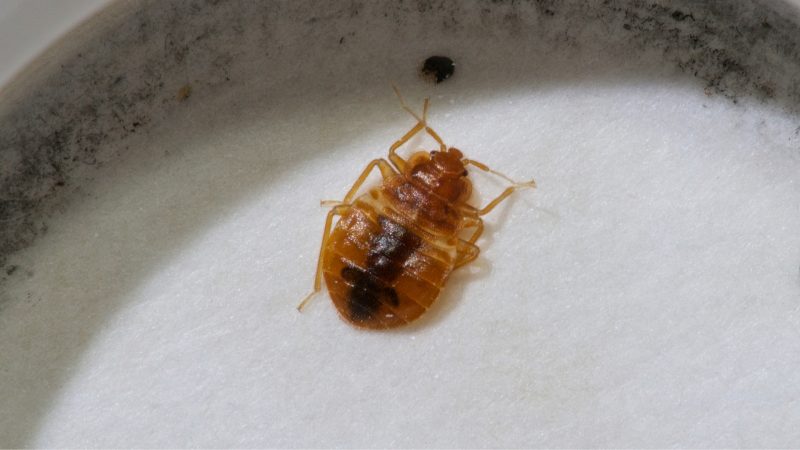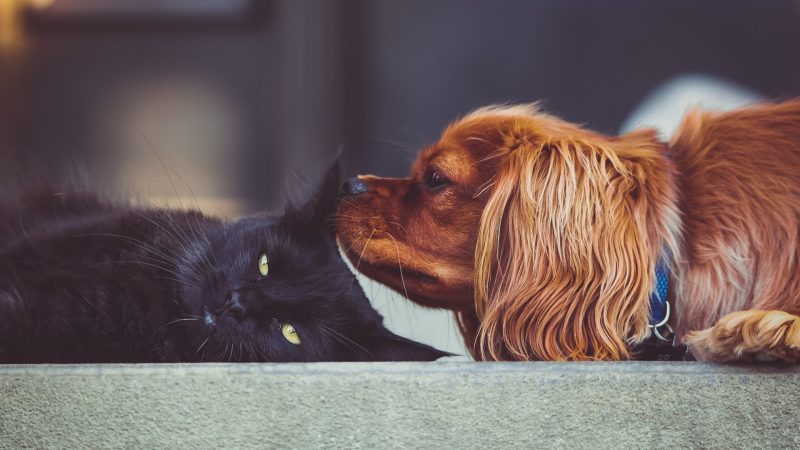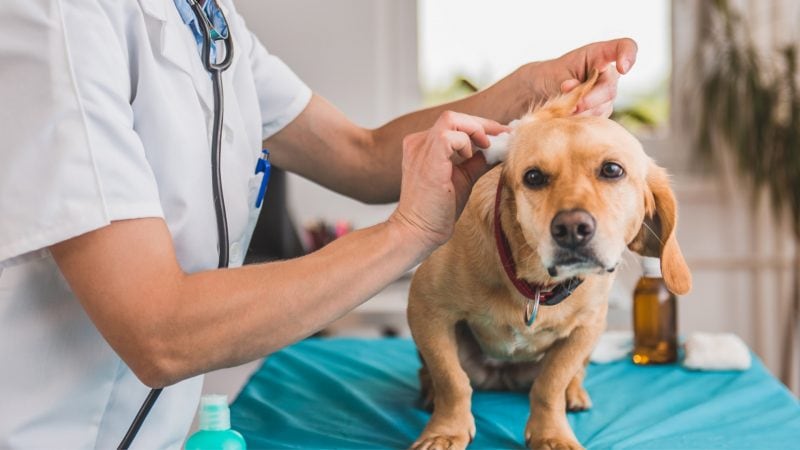Pets are our companions, play buddies, exercise mates, and at times, the most popular member of our families. When your pet is sick, you go through all the emotional trauma as you ensure that it is well taken care of. That is why it really is heartbreaking when bed bugs decide to snack on your best furry friend.
So, can pets carry bed bugs? It isn’t common for pets to carry bed bugs. Bed bugs are not built to trudge through hairy surfaces. However, bed bugs are experts at hitchhiking and hiding because of their tiny bodies and so there is a possibility of a few of them hiding in your pet’s fur and getting carried.
In this article, you will learn of any danger posed to your pets by bed bugs, the right treatment of bed bugs on pets, and the safe products to use while treating your pets for bed bugs.
Do Bed Bugs Bite/Feed on Pets?
Bed bugs do bite your pets. The blood-sucking pests still very seldom actually bite your pet, though. Bed bugs can also cause itching wounds on your pet since they feed on your pet when they can’t get a blood meal from a human.
Do Bed Bugs Bother Pets?

Having tiny pests bite on you while you sleep is downright annoying and the same goes for your pets. Bed bug bites appear in various forms on different people. Some get itchy welts on their skin while others remain unaffected by the bites. This is pretty much the same situation when it comes to pets being bitten by bed bugs.
They will scratch continuously in an effort to get rid of the little bloodsuckers, a situation which is quite unpleasant for your pet.
Can You Get Bed Bugs From Pets?
There is a possibility that your pets will transfer bed bugs to you, however, it is quite slim. The idea of you getting bed bugs from your pet insinuates that your house was bedbug-free until your pet brought the bugs home. This is possible but only under the following circumstances:
- Your pet likes to play in places that may be infested with bed bugs e.g. your neighbor’s house, on recently abandoned furniture, near a homeless person’s abode, etc.
- You just came from traveling with your pet.
- You had someone pet sit for you in their possibly infested homes, etc.
Basically, if your pet has been to an infected location, the chance of him bringing back a bug is high, h. However, it should be noted that bed bugs do not live outside. This means that if you keep your pet strictly around your fenced compound, your furry friend isn’t the reason why you have those bed bugs.
Are Bed Bugs Harmful To Pets?

Unlike fleas and mites which are known to spread diseases to your pets and even humans, bed bugs are not known to carry diseases. However, just because they do not spread diseases, it does not mean that they are harmless.
In the case of a severe infestation, your poor pet will be fed continuously and constantly which could lead to the following:
- Anemia (but only in severe conditions). This will be a result of your pet losing too much blood because it is being fed on by bed bugs at an alarming rate.
- Discomfort due to lots of itching and scratching.
- Skin lacerations due to continuous scratching.
- Infections in the lacerated patches of skin if not treated immediately.
Do Bed Bugs Stay On Pets?
The possibility of bed bugs staying on your pet is quite slim because bed bugs do not nest on their host. They emerge in the unholy hours of the night, find a nice patch of skin to latch on while the host is sleeping and then they continue to fill up on the warm blood.
Once satisfied, they retreat to their cool corner of the pets’ bedding or another hidden corner and hide away until their next meal. Bed bugs prefer to live in a cooler hidden-away corner rather than in the warm environment that is their warm-blooded host.
Which Pet Eats Bed Bugs?
The most common pets in the majority of our homes are cats and dogs. It is true that some pets do in fact feed on bed bugs, unfortunately, these do not include cats or dogs.
While a smile may form on your face at the prospect of having natural bed bug predators help you in the fight against bed bugs, hold that thought as we go through the types of animals that feed on bed bugs.
- Spiders (Philodromid crab spider and the cobweb spider)
- Cockroaches
- Ants ( argentine ants, pharaoh ants, or European fire ants)
- Ladybug (eat baby bugs)
- Centipedes
- Masked hunters (these are avid bed bug hunters)
- Pseudoscorpion
The idea of trying to get rid of bed bugs in your home by introducing natural predators is inconsequential to the bed bug infestation in your home. Remember that these predators will also want to reproduce with their own kind, and before you know it, you now have a second infestation, and the bed bug one won’t seem like such a problem anymore.
The bottom line is, it is wise to set aside the idea of using natural predators to clear the bed bugs in your home and instead try other means, e.g. calling a professional exterminator.
Is Bed Bug Treatment Safe For Pets?

The market is overflowing with bed bug-killing products. While some of them may be safe to use around the house, they cannot be used on pets.
Such products include:
- Raid bed bug spray – This product is very effective in the fight against bed bugs and other fleas but it should not be used directly on the pet. Spray it in the infested room but make sure you keep your pet or even children away from that room until it dries. For more insight as to how long it will take to dry, please read the label carefully and follow the instructions listed there with vigilance.
- Kills bed bugs and their eggs on contact
- Kills bed bugs on surfaces for up to 4 weeks
- Foam expands into hard to reach indoor places, and is easy to see...
- Scientifically formulated to kill Pyrethroid-resistant Bed Bug...
- Money Back Guarantee
- Hot Shot Bed Bug Killer Dust – This is one product that you probably should avoid while treating bed bugs in your pet-friendly home. The product is pure dust and it should be applied to all corners of your home, basically all the areas with bed bugs. While this powdered product will work to kill the bed bugs, it may be harmful to your pets when they inhale it. Remember it is a powder that will get applied to all corners that your pet can reach and inevitably inhale.
- BED BUG TREATMENT: This dust kills bed bugs, fleas and other...
- WHERE TO USE: Apply around bed frames, mattresses and box...
- KILLS A RANGE OF INSECTS: Also kills fleas, cockroaches, ants,...
- APPLICATION: Lightly coat in areas where listed pests are found...
- TREAT BED BUGS ARE PART OF A CYCLE: For best results, use this...
How to Get Rid of Bed Bugs on Pets? | Pet-Friendly Bed Bug Treatments
There are no specific bed bug products designed solely for pets. With this in mind, let us look at the steps involved when treating your pets for bed bugs.
1. Clean Your Pet
The process here will involve a full-body grooming session, trimming fur, and all the steps involved, followed by washing your pet. The first step will reduce the bed bug hiding areas and make it easy for you to spot any bites, cracks, or welts on your pet.
The next step will involve a thorough shampoo bath which will require a natural shampoo to soothe the pets’ irritated skin. There are no bed bug shampoos in the market but shampoos that are organic and meant to treat dry and itchy skin will do.
- RELIEF FOR SENSITIVE SKIN: Our Natural Dog Company Sensitive Skin...
- NATURAL POWER INGREDIENTS: Featuring Colloidal Oatmeal for...
- TOTAL GROOMING CARE: Combine our Sensitive Skin Dog Shampoo with...
- LONG-LASTING FRESHNESS: Regular use of our Sensitive Skin Shampoo...
- GREEN & CLEAN – Embrace a greener grooming routine with our...
- ✅【All Natural Plant-Based Patented Formula for Your Furry...
- ✅【Premium Pet Care for Your Dog Wellness - Made in USA】This...
- ✅【One Wash, Endless Benefits: 5-in-1 Grooming Marvel at Your...
- ✅【Nurture, Nourish, & Renew with Unique Ingredients】What...
- ✅【Advanced Deshedding Formula for a Healthier, Happier...
- PET GROOMING BRAND IN THE USA - Join the millions of pet parents...
- SOOTHES AND SOFTENS - Burt's Bees Oatmeal Shampoo cleans,...
- MADE WITH THE HIGHEST QUALITY INGREDIENTS - This gentle formula...
- SUITABLE FOR ALL DOGS AND PUPPIES - This mild tearless shampoo is...
- SAFE AND GENTLE - This formula is free of fragrances, sulfates,...
Do not worry about the probability of bed bugs remaining attached to your pet. The water will disorient the bugs causing them to detach from the pet and inadvertently drown as you drain your water.
2. Clean Pet’s Environment
After you have cleaned the pet and gotten rid of any hiding bugs on them, next you need to clean its entire environment and items.
This process includes laundering the pet’s bedding, towels, toys, etc. If these items can be washed in the machine, set the washer to the highest temperatures because heat kills bed bugs. If they cannot be washed in the machine, consider steam cleaning the items, a process that is equally effective and also uses heat.
Another way is to soak them in really hot water for a few minutes to kill the bugs. After cleaning out all your pets’ belongings, ensure that you have vacuumed the pets’ feeding, sleeping, and playing area.
After vacuuming the pet’s area, use a combination of pet-safe pesticides to treat the area.
- Ortho Home Defense Insect Killer for Indoor & Perimeter2 is a bug...
- Provides a long-lasting bug barrier of up to 12 month protection...
- Apply this pesticide anytime as a preventative treatment or after...
- Use this pest control spray with confidence indoors (kitchens,...
- The easy-to-use continuous spray Comfort Wand helps you control...
- KILLS & REPELS. A preventative and a treatment, this spray is a...
- ATTACH & SPRAY! Just attach directly to a garden hose, spray your...
- TREATS UP TO 5,000 SQUARE FEET. A bug control spray that can be...
- TREAT NATURE WITH NATURE. No artificial colors, fragrances. Made...
- POWERED BY NATURE. Powered by cedar oil, our plant-powered...
- 3-IN-1 GARDEN SPRAY - Earth’s Ally 3-in-1 Plant Spray is an...
- KILLS AND REPELS INSECTS - Kills common soft-bodied insects...
- CONTROLS AND PREVENTS DISEASE – Controls common plant disease...
- POWERFUL, PLANET-FRIENDLY RESULTS – Formulated with safe...
- PROVEN BEE SAFE – Earth’s Ally is committed to protecting our...
Related: Bed Bug Droppings | Identifying, Treating and Preventing
3. Treat the Entire House
The thing about bed bugs is that as long as they have entered your home, be it through the pet or by whatever means, they spread really fast. So, this means that washing your pet and its living space is not enough, you have to do a thorough treatment of your entire home.
This is because by the time the bed bugs have started feeding on your pet, – a clear sign of an infestation. They have certainly been to other areas of your home. Remember that their first meal preference isn’t the pet, no, their first warm-blooded meal preference is you. For them to have reached your pet, it means they can certainly be found in other areas of your home too.
List of Sources
Bed Bug Behavior, University of Minnesota
Koehler PG, Pereira RM, Pfiester M, Hertz J. (July 2011). Bed bugs and blood-sucking conenose. EDIS. (26 April 2017)
Diseases & Conditions – Bedbugs, Mayo Clinic
- How to Get Rid of Copperheads | Practical Guide - August 27, 2023
- How to Get Rid of Corn Snakes | What Makes Them Aggressive? - August 27, 2023
- How to Get Rid of Alligators | Safety Measures and Removal Methods - July 16, 2023




![Oatmeal Dog Shampoo & Conditioner 17oz [USA] 5 in 1 Plant-Based Organic Sulfate-Free Soap-Free-Tearless Moisturizer for Dandruff Allergies & Itchy Dry Sensitive Skin-Puppy Grooming [Pro Pet Works]](https://m.media-amazon.com/images/I/41879dA1aHL._SL160_.jpg)



